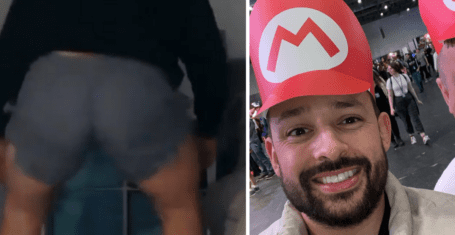
The rise and fall of influencers: Is the age of giveaways and #ad posts coming to an end?
Was Dubai actually the tipping point we all thought it was?
In the last few months influencers have been at the forefront of national attention for travelling to Dubai to take bikini pictures whilst the rest of us struggle at home. They have been slandered on Twitter, torn apart in the opinion columns and even called out in the Commons by Home Secretary Priti Patel.
Influencers often show how out of touch with reality they are – promoting weight loss plans whilst more people than ever are using food banks, claiming furlough for their companies whilst being worth millions and travelling to Dubai for “work” when all they appear to do is sit on a sun-lounger, drinking cocktails.
After years of detox teas, PrettyLittleThing collaborations and photoshop, Dubai seemed to be the straw that broke the camel’s back. People were finally beginning to turn away from influencers. According to a survey by The Tab, 85 per cent of young people have unfollowed influencers during the pandemic.
They cited the breaking of lockdown rules as a major reason – but that wasn’t the only reason. The promotion of fast fashion, lack of original content and promoting an unattainable lifestyle all fed into many young people’s abandonment of influencer culture.
The last few months really felt like it was the time people finally hit the unfollow button on influencers they’d been following for years. So is this the beginning of the end for influencers as we know it?

via Instagram @mollymaehague
Influencers have always existed in some capacity. In the 90s it was Jennifer Anniston’s ‘Rachel’ haircut that saw women all over the world cut their hair into a flicked out bob. It was so impactful it helped Anniston become the face of L’Oreal Elvive. Before that Michael Jordan had one of the first influencer collaborations, signing off a $2.5million deal with Nike which included the custom Air Jordans. In the early 00s, Kate Moss had a sell out collection with Topshop that was so successful it was being resold on eBay for triple the price.
These three celebrities were early pioneers of influencer culture. However the key difference with those celebs and the influencers we see now is that Michael Jordan and Jennifer Anniston’s branding deals were an add on to their already successful careers as a basketball player and actress. Without their branding deals they still would have long careers, but now for many young influencers their entire career is selling products because of how famous they are as a person.

via Instagram @lauraanderson1x
Influencing as we know it today started thanks to Instagram. Fashion bloggers took their advice and outfits from blogs and put them on the app. Street style became a thing and slowly those with millions of Instagram followers were replacing major celebs on the front row of fashion shows.
Then came fitness, food and mummy bloggers who carved out niche spaces on Instagram where they could inspire their community and sell products to their followers.
And then came Love Island. When the major newspapers talk about influencers this is who they mean – those perfectly tanned people, dressed in PrettyLittleThing who cover their houses in plush grey furnishings.
When the show first started in 2015, it wasn’t watched by millions and contestants genuinely went on it in the hope of finding true love. But as the years went on and the viewing figures rose the contestants who left Love Island were able to make careers for themselves simply by posting a photo in clothing sent by a brand and charging hundreds for it.
And it’s not just ex-Islanders but reality stars from Made in Chelsea and TOWIE also jumped on the bandwagon, promoting skinny teas, leggings and hair gummies.
Molly-Mae Hague from Love Island 2019 has five millions followers and can reportedly charge £10,000 per Instagram post. In a few posts she has made someone’s yearly salary.
Before the Advertising Standards Authority (ASA) guidelines took over Instagram, influencers didn’t have to disclose that what they were promoting was gifted or they were being paid for it. In 2018 that all changed when the ASA stepped in and placed stricter rules essentially bringing more transparency to our Instagram feeds about what we were being shown.
There’s even bigger money to be made in influencer marketing beyond individual posts; many influencers can garner six figure deals with brands to collaborate on collections. Molly-Mae reportedly signed a £500,000 deal with PrettyLittleThing after leaving Love Island and the winner of her season, Amber Gill, had a £1 million deal with MissPap. This is just a fraction of the money that can be made by influencers worldwide. The global influencer industry is worth over $5 billion and is expected to grow by 15 per cent this year.

via Instagram @amberrosegill
With the pandemic drastically altering everyone’s lives it has made people reassess who they follow and why.
More people than ever are using food banks, care home residents have been unable to see family members for months and millions are on furlough or without employment. It then doesn’t sit right with many to be watching an influencer pose in a designer swimsuit on the shores of a beach 12 hours away.
The gaping disparity between influencers and the rest of us was never more evident than at Christmas. Whilst people were unpacking their bags after being told their long awaited trip home to see their families was cancelled, panic buying a turkey and settling into the prospect of not seeing friends for weeks, influencers such as Amber Gill and Laura Anderson were packing up their two pieces and jetting off to Dubai.
The nation had quite frankly had enough of the unfairness of it all. The media hounded influencers for making use of the government’s travel corridor and it even became a talking point on This Morning when Phil and Holly conducted that awkward interview with influencer Sheridan Mordew in Dubai about why she travelled there. In the interview Mordew claimed she had travelled to Dubai for her mental health and called herself and other influencers “key workers”. Holly summed up everyone’s feelings when she said influencers weren’t joining in with the community spirit of lockdown.
She said: “It’s not in the spirit of it, is it? When at the moment in lockdown we’re in this together that’s what it feels like.
“However, when we see someone like you beside a pool, we’re not in this together, it’s not in the lockdown spirit.”

via ITV
Influencers had already had a bad few months and the Dubai trips were the cherry on the cake to get people to finally turn away from them.
But does this mean all influencers are over? Not at all.
When speaking to students about why they had unfollowed influencers many had cited that rather than abandoning Instagram all together, they had simply changed who they followed.
One such influencer is Dr Alex. Dr Alex, an ex-Love Islander has become somewhat of a hero during the pandemic and gained nearly 250,000 followers on Instagram in the last 30 days.
As a junior doctor in the NHS and a reality star he occupies a unique position of having a large following, but rather than using his platform to promote fast fashion he used it to show the reality of the pandemic.
On his Instagram and TikTok accounts he highlights extraordinary workers in the NHS and shares tips for looking after your mental health. An avenue he has channeled into real action by being appointed an ambassador for mental health by the prime minister. A position he will unfortunately do well in due to the death of his younger brother Llŷr, who died by suicide last year.

via Instagram @dralexgeorge
The main reason so many young people love to follow Dr. Alex is because he stands for something. The students we spoke to said they had now started following influencers who engage in activism such as body positive influencers like Body Posi Panda, feminism campaigners like Amika George and LGBTQ+ figures such as Munroe Bergdorf.
The pandemic and the BLM protests that occurred in June last year have made it clearer to young people they don’t want to just follow a pretty person showing them the latest bag. They want people who align with their values of caring for the environment, social justice, diversity and activism.
And brands and influencers are aware of this. Many influencers know they cannot survive on just fashion posts alone or if they do it has to have a cause attached to it.
2017 Islander Montana Brown has founded a swimwear brand called Swim Society. The swimwear is made from recycled materials and the Instagram feed features diverse models. The brand ticks two key boxes of activism Gen Z is concerned with – the environment and diversity.
Though many of the students we spoke to said they’d unfollowed Love Islanders entirely with the exception of Dr Alex, a few did say they would still follow his fellow Islander Megan Barton Hanson.

via Instagram @meganbartonhanson_
Megan appeared on the 2018 edition of Love Island and quickly became a fan favourite for her ballsy attitude and straight talking attitude about sexuality. She’s continued to do this in her post Love Island career, never being afraid to speak up on important issues and has even created a podcast dedicated to putting yourself first.
The Tab spoke to Megan about where she sees the future of influencing going. She thinks the key to being successful as an influencer is to stick to your core values and to not promote the image of perfection.
She told The Tab: “People are much more aware and careful of who they follow now and people can see straight through a poser. Creating authentic content and sticking to your core values is so important.
“I think they [influencers] have a responsibility to show they are not perfect and keep it real for people to see that we all have good and bad days. Building this image of perfection doesn’t help anyone.”
Megan may be one of the few influencers to have longevity in the influencer market. A number of students we spoke to felt influencers wouldn’t be around in 10 years’ time.
Southampton student Sanj told The Tab she doesn’t think the future of influencers is “looking good”.
She said: “People are already tired of influencers flouring lockdown rules, promoting products they don’t use and just generally being selfish
“I also think the fact that we now know how much influencers can get paid for one Instagram post has really put people off, especially during a pandemic.”
Durham student Zara echoes Sanj’s feelings. Zara suggests the influencer market has become “oversaturated” and will no longer be seen as a great commodity for businesses.
She said: “So many young people now think that they can just ‘become’ an influencer, whereas realistically the only way someone could come from nothing to becoming one now is if they went on a show like Love Island.
“I also think people are a lot more open to questioning the products influencers are promoting than we used to, whether that’s detox teas or really irresponsible fast fashion brands, so I’d imagine their commodity to the brands sponsoring them isn’t going to feasibly last forever.”

via Instagram @addisonraee
But London student Livi thinks influencers will always be around it’s just the presentation will differ.
She said: “Influencers aren’t a new creation, there have always been ‘it girls’ like Paris Hilton, Katie Price, Kardashians etc. They didn’t have specific careers; they were just famous for being rich party girl types.
“So I think the form might change, but there will always be influencers, because there will continue to be money to be made by having pretty young women sell them things.”
The form of influencing is already starting to change. The emergence of TikTok has created a whole new group of content creators who are the same age as Gen Z and care about the same things they do. They portray a much more reflective view of how Gen Z feel and act. And it pays off.
TikToker Addison Rae earnt an estimated $5 million last year thanks to her success on the app. Now many Instagram influencers are scrambling to create TikTok accounts in order to stay relevant.
Though the apps may change, and the content will be different, influencers will still remain.
Related stories recommended by this writer:
•We asked 15 people why they’re unfollowing influencers, and Dubai isn’t the only reason
•Dear influencers: Stop using ‘be kind’ as an excuse to be a dick in the pandemic
•Ranked: The reality stars who have lost thousands of followers whilst in Dubai





















